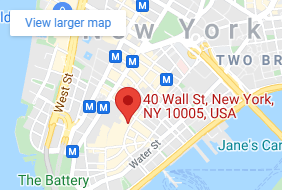With millions of products on the market, it can be reasonably anticipated that a certain number of consumers will sustain an injury in the use of a product. The question therefore asises: what are the rights of the injured consumer as against the manufacturer? The same question applies to the supplier (distributee) of the product.
Under New York law, an injured consumer can recover against a manufacturer: (1) if the product was marketed with a design defect, and not reasonably safe; (2) if it was reasonably feasible to design the product in a safer manner; (3) if the defective design was a substantial factor in causing the injury to the consumer.
Under New York law the above falls within the category known as “strict products liability”. Under this doctrine, a consumer who uses the product in the reasonable manner in which it was intended to be used, but suffers injury nonetheless, may recover from the manufacturer, so long as the above three elements are met.
In addition to “strict products liability” an injured consumer or user of the product may recover against the manufacturer or supplier, or both, if it can be established that the manufacturer was negligent in its manufacturing process, or if the supplier was negligent in the distribution of the product. Negligence is a more difficult theory to pursue since the manufacturer and/or the supplier can always rely upon its own compliance with industry standards, in addition to claiming the comparative negligence of the consumer or user of the product, which will either bar totally or limit recovery.
In addition to proceeding on a “strict products” or “negligence theory”, a consumer or user of the product may allege a “failure to warn” which raises the issue of whether there was a reasonably sufficient warning or label on the product itself that would alert the reasonable user of the product of the potential risks, and or dangers in the product’s use.
General issues involving strict products liability, a manufacturer’s negligence, and failure to warn, were discussed recently in Faherty v. Birchwood, Inc., Supreme Court, Queens County (Justice Markey,).
In that case, Faherty, a ten year old sustained an injury to two fingers requiring amputation when her fingers got caught between the links of a chain that supported a playground swing she was using at the time. An action was brought against the manufacturer of the swing, the chain of which was distributed to it by a supplier (also known as a component supplier), claiming that the supplier of the chain failed to warn the manufacturer of the swing as to the dangerous propensity of the chain under certain use. The Court dismissed the claim against the component or chain supplier on the theory that the infant plaintiff failed to offer proof that the failure to warn the manufacturer of the dangers involved with the chain’s use, would have resulted in the ten year old to not use the swing. The plaintiff’s claim of a design defect against the manufacturer however, was allowed to go forward.
The Faherty case and others that fall within the category of “products liability” are usually difficult cases to prosecute on behalf of an injured plaintiff. The handling of such cases requires a high-level of court room trial experience in this area of the law since most products liability cases, unlike automobile or premises cases, are usually complicated, and vigorously defended by defense counsel who are usually well-versed in this special area of the law. Therefore, plaintiffs’ counsel must be intimately familiar with, and on top of a long line of cases decided by New York’s appellate and highest court, each case of which adds a subtle nuance to this complicated and challenging body of law.





























